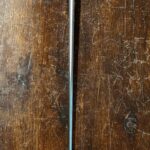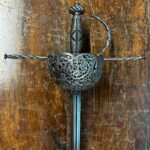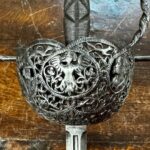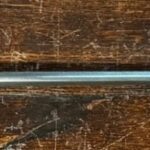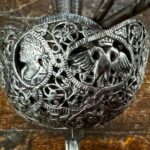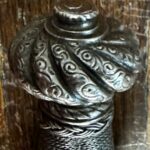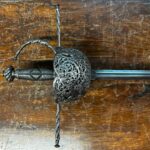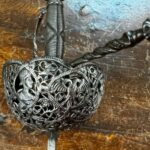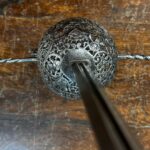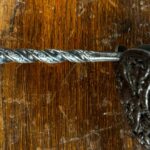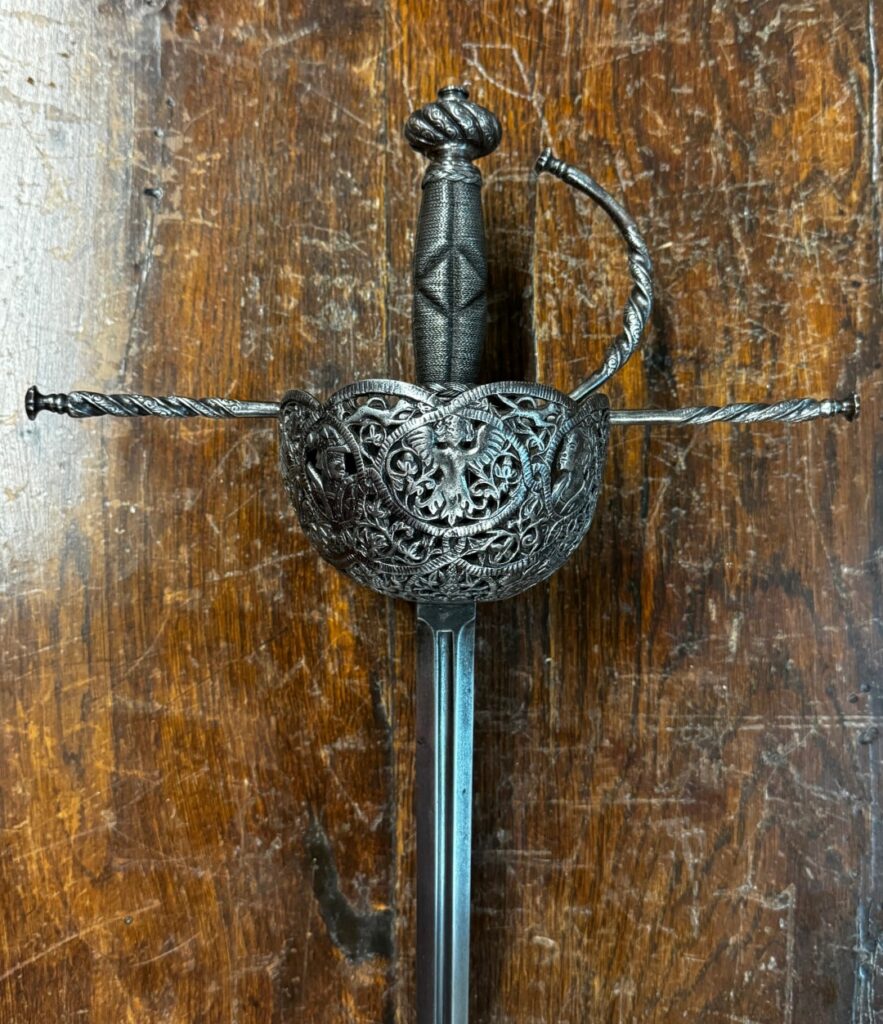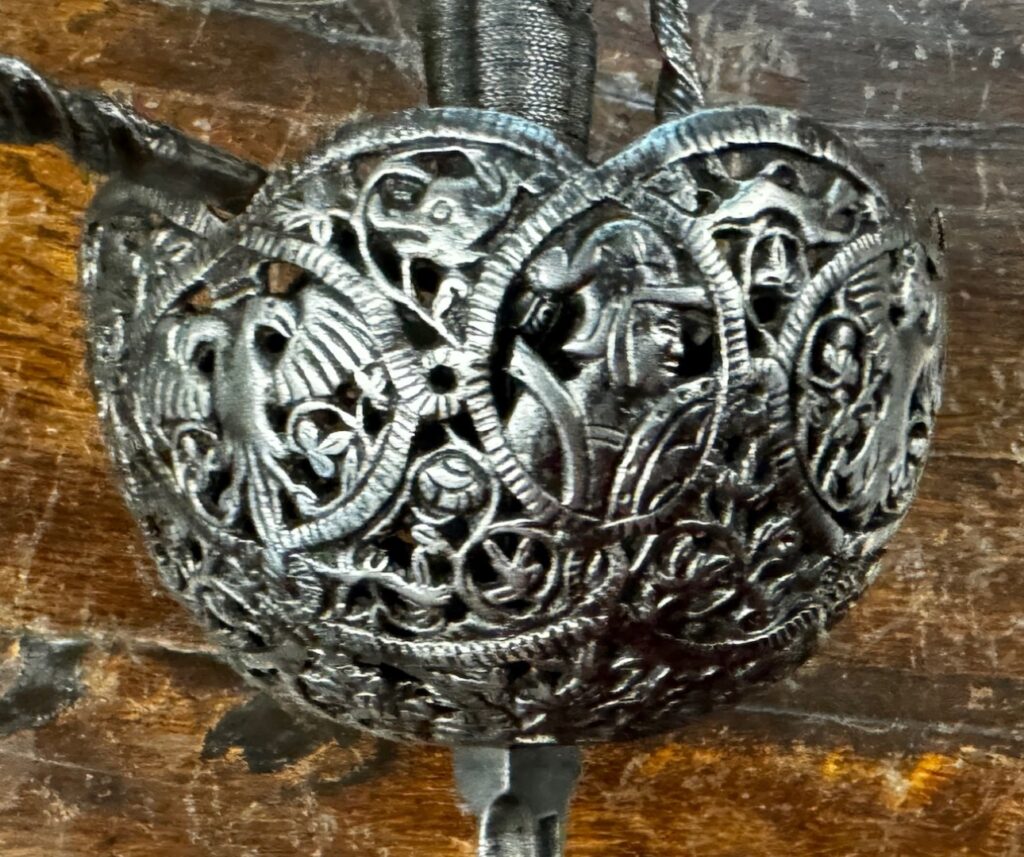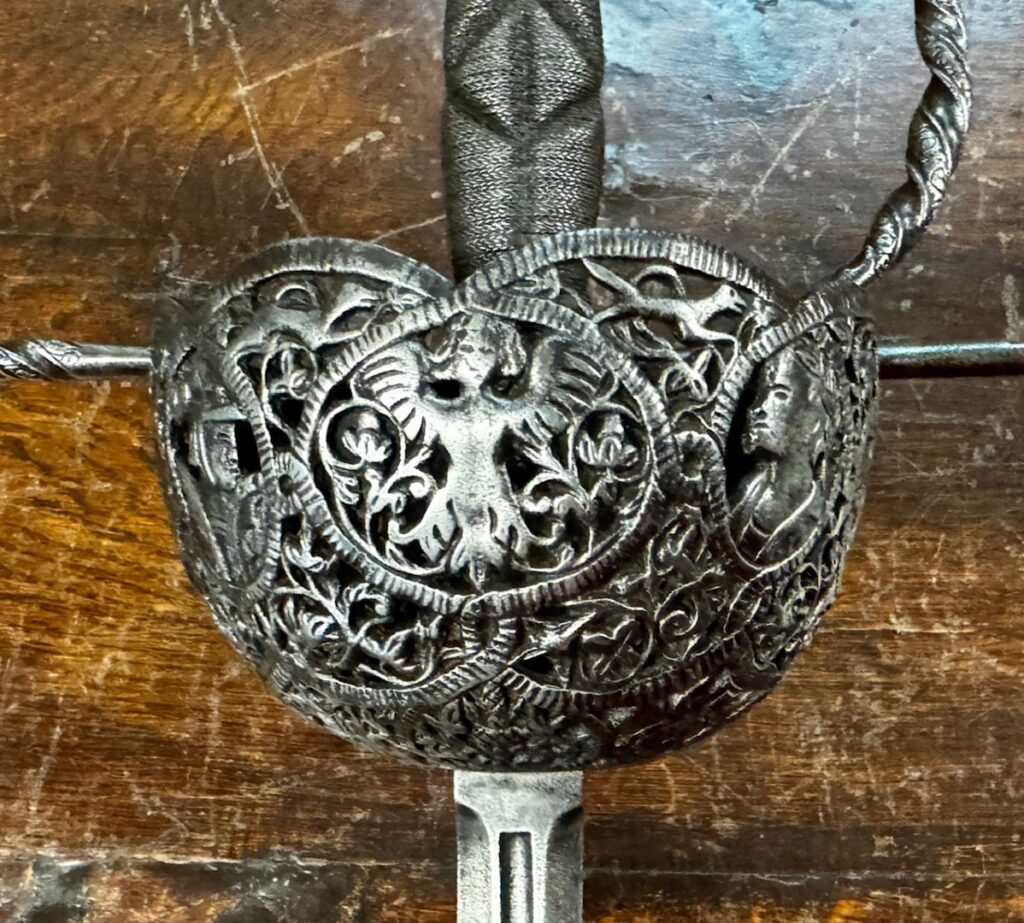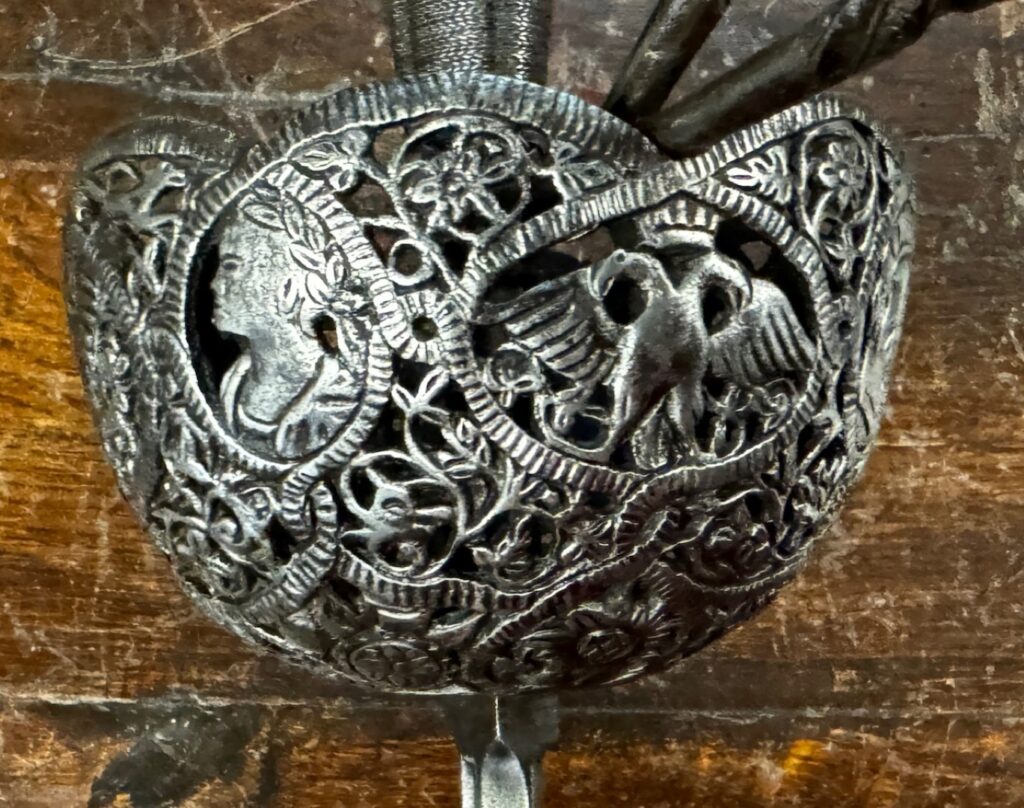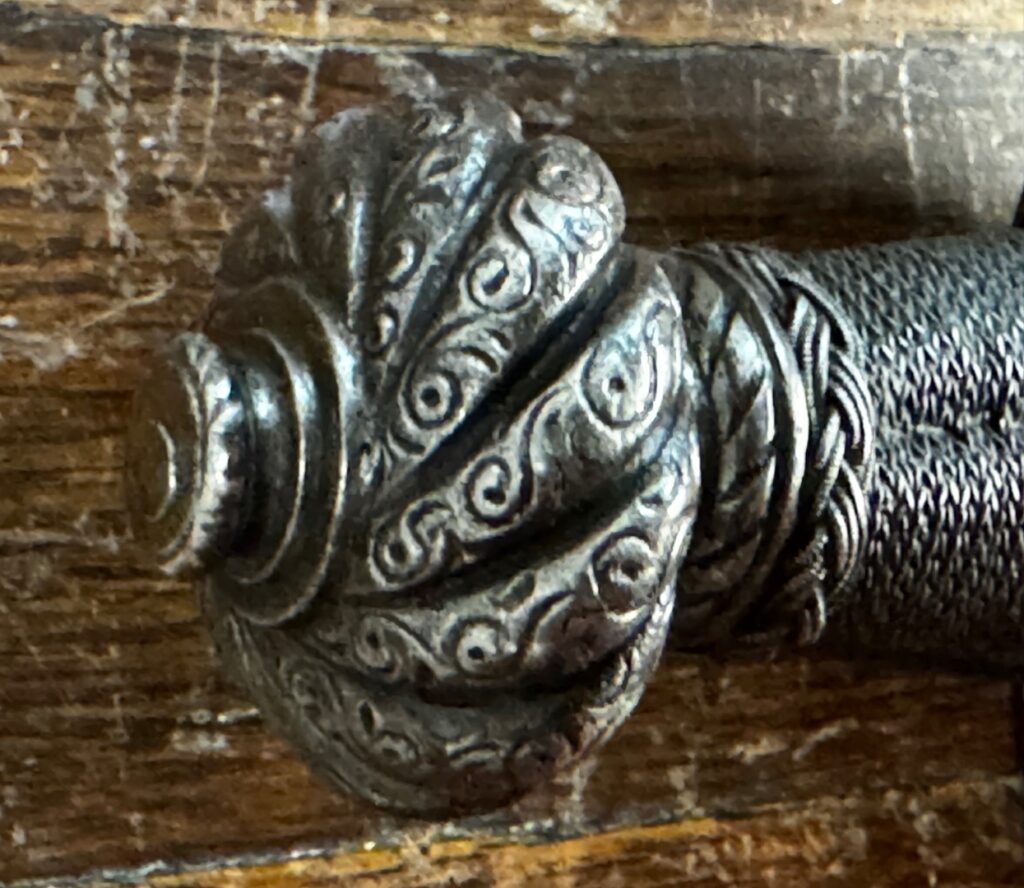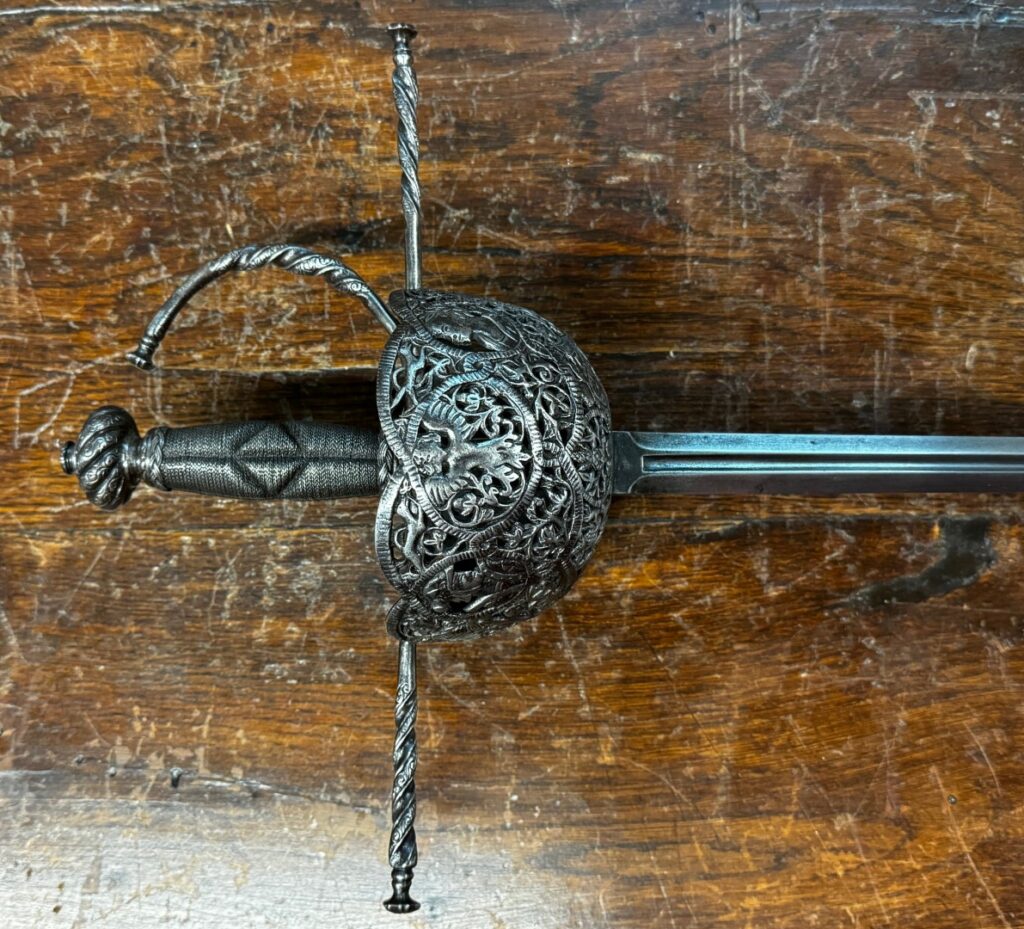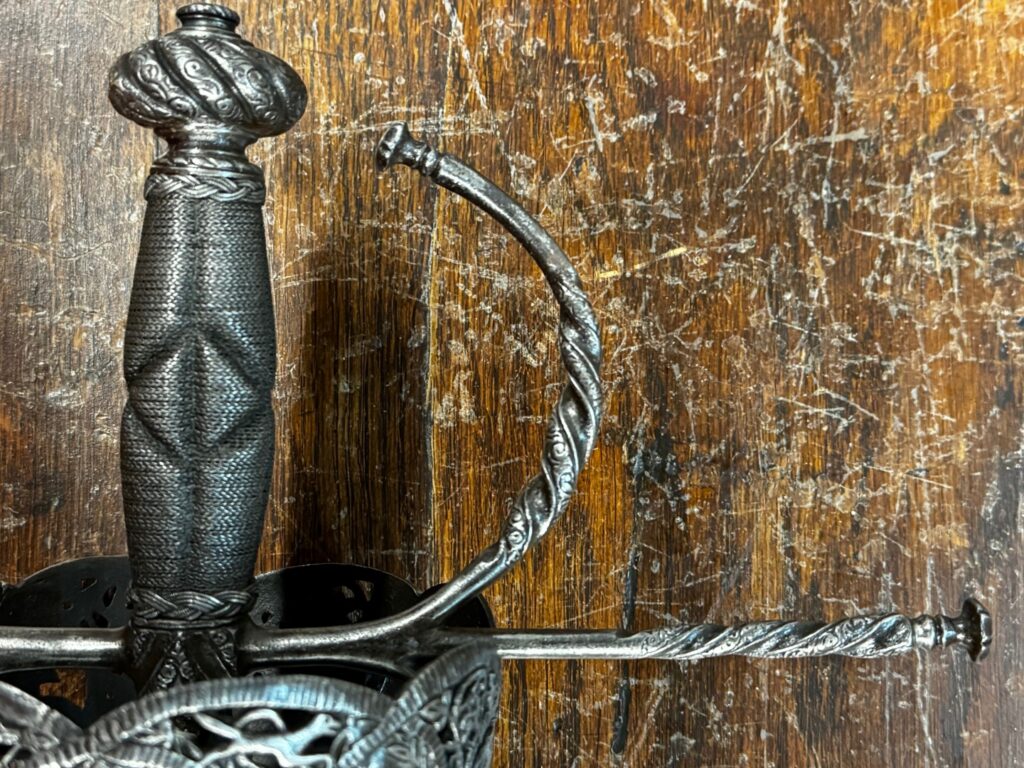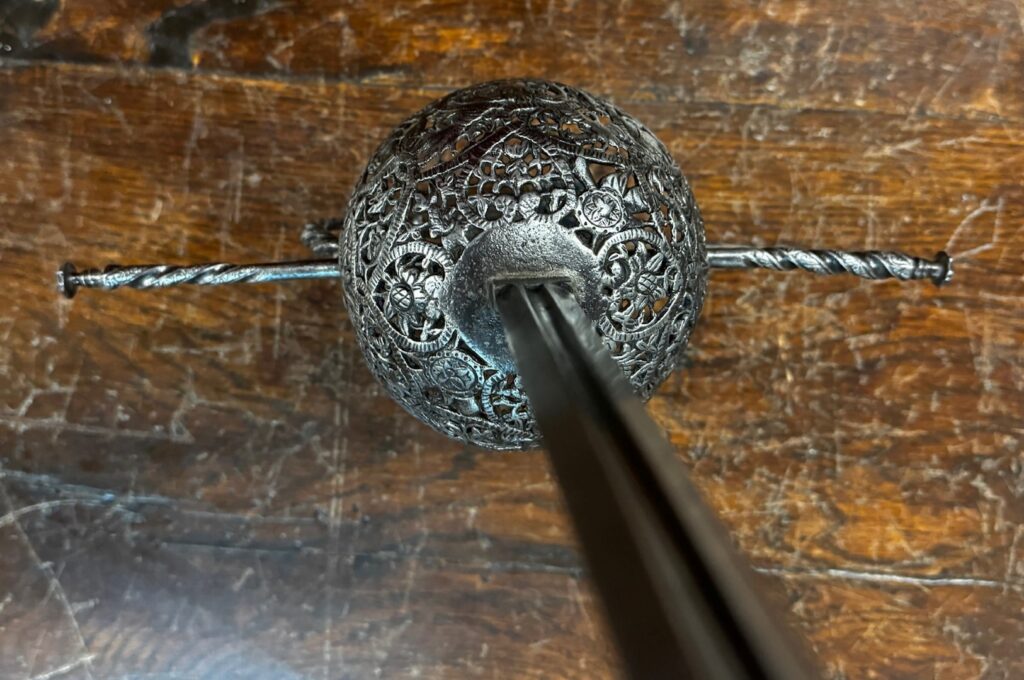1699) HIGHLY DECORATED PIERCED CUP HILT RAPIER CIRCA 1650: Mint museum condition.
Description: Under the Norman typology, this sword is classified as a hilt 101 and a pommel 66. The cup is decorated with pierced decoration of flowing vines and flowers with animals, saints, angels, and soldiers. It has an original grip and a tapering blade with deep fullers on both sides. The hilt and pommel are decorated en suite with twisted and etched decoration. The hilt has an embossed wire grip and Turks’ Heads.
Approximate Dimensions: Total length 52 inches. Blade 44.5 inches.
Discussion: In a day and age lacking appropriate policing, the private citizen was forced to protect himself from society‚ criminal dregs. From the middle of the 16th to the end of the 17th century, the weapon of choice was the rapier. The rapier is a simple but highly effective sword against the non-armored. The rapier was primarily a thrusting weapon that could inflict serious injury to an adversary‚ vital organs with minimal effort. It was also an exceptional slashing and cutting weapon; however, the slash was not as lethal as the thrust. The slash was used more as a feint to set up a finishing thrust. The slash was also a dire warning to a would-be assailant of the horrors to quickly follow if he chose not to acquiesce. The rapier is almost undeniably of Spanish origin and is probably Spain‚ most significant contribution to the Renaissance arms race. A highly expensive, ornate rapier was the equivalent of a person in our day and age making a fashion or opulence statement by wearing very expensive jewelry, such as a Rolex or Audemars Piguet watch. Because fencing is more of a thrusting art, it became commonplace throughout Europe to have as long a blade as possible to obtain an advantage. This extravagance in length reached the point that municipalities passed statutes regarding the allowable lengths of blades. Those in violation had the misfortune of having their rapier blades cropped at the tip at the city gate to comply. One example of these statues is from an English Royal Proclamation on March 17, 1557‚ 1558.
Provenance: From a private 80-year collection that started after WWII. Acquired from the 65-year-old granddaughter.
Conclusion: An exquisite addition to any collection. Even if you are not a rapier aficionado, all collections should have at least one. This cup hilt rapier is in museum condition. You are getting a lot of sword and flash for the money. It’s priced to sell fast at way under $5K!!!!*

